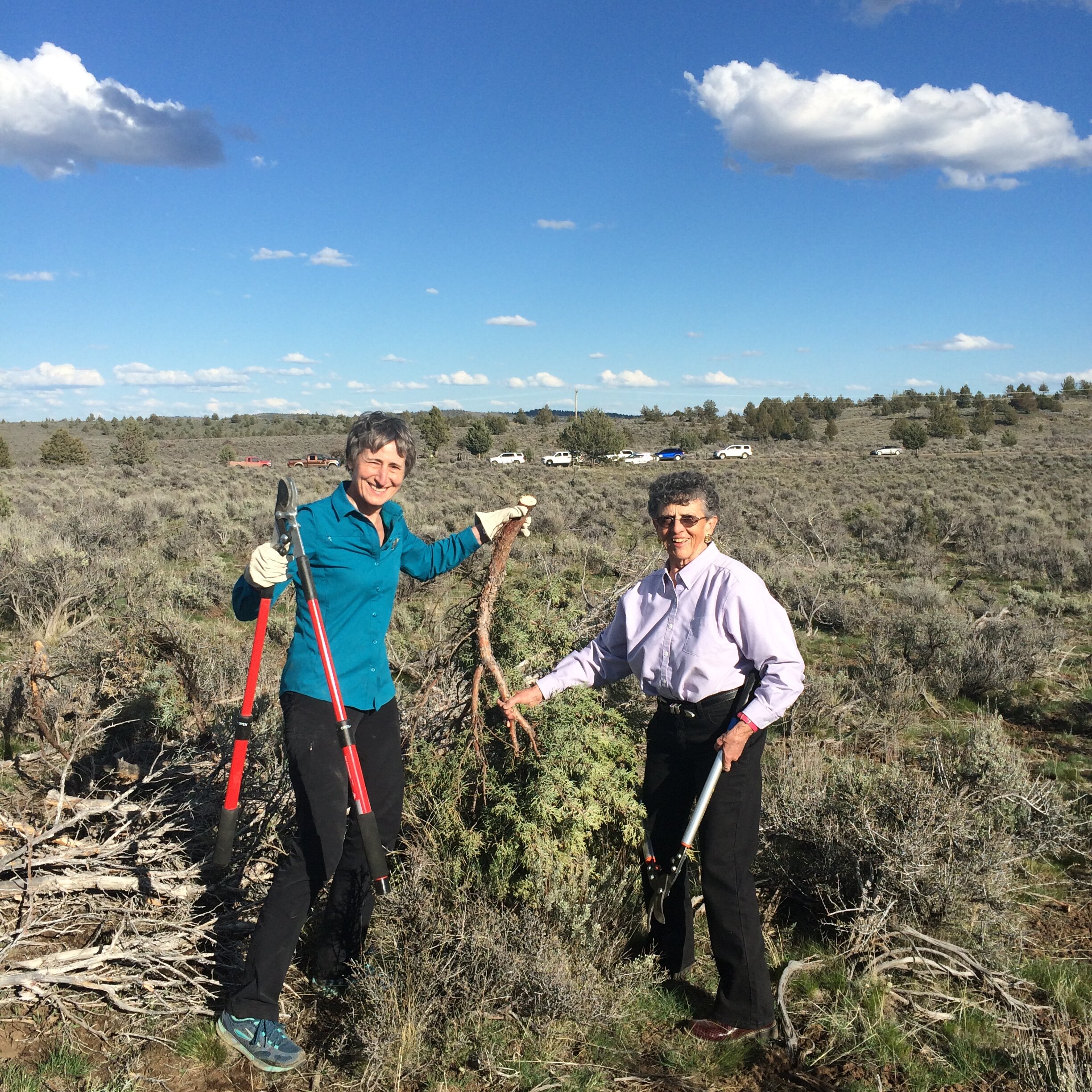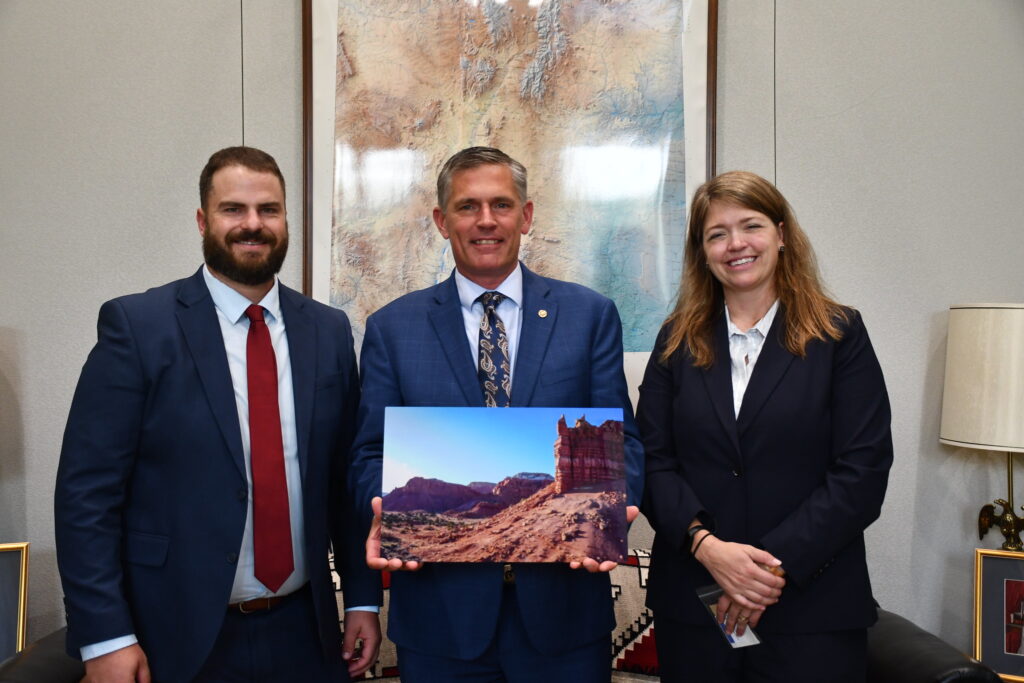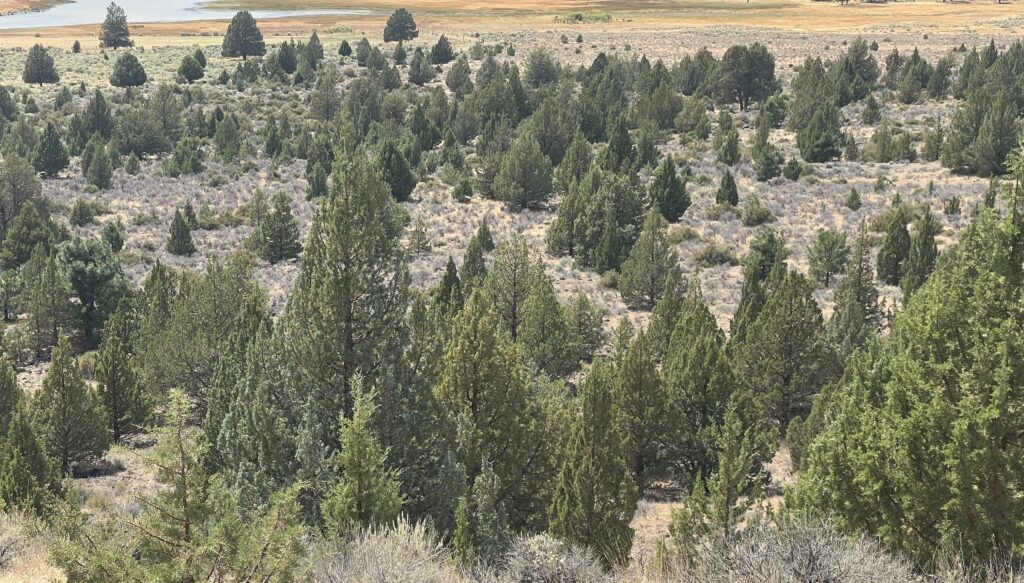
The following story is by Julia Babcock with the Oregon Sage-grouse Conservation Partnership.
My father worked in the genetics lab in the 1970’s. It gave him the sense that anything was possible; that humans and nature could collaborate to shape both DNA and destiny. Growing up, my father told me that my life’s work was to bring back the dodo bird from extinction; to right the wrong of history where a docile and trusting bird was decimated by human cruelty and greed. No small feat, right?

As I evolved in my career, it wasn’t re-creating a species by learning genetic sequencing that drove me to study natural resource management, but rather the injustice of extinction and the fact that human behavior could alter the course of life on our planet. When I joined the National Policy Consensus Center (NPCC) at Portland State University, an early assignment taught me how complicated the relationship between humans and nature can be. A new journey and a strong tie to another strange bird began. I guess you could call the sage-grouse the Dodo of the Desert.
At that time in 2010, the state of Oregon was advancing a conservation assessment and strategy for the Greater Sage-grouse, a ground-dwelling bird that is a surrogate for healthy sagebrush habitat. Conflicts were primarily framed around large-scale development (such as renewable energy siting) near sensitive sagebrush areas. Policymakers were working to be proactive in signaling to developers that fragmentation of the landscape could push sage-grouse populations into permanent decline. Ultimately, this led to a large, state-wide planning effort.
NPCC facilitated a process for state and federal agencies to coordinate with local communities and other diverse parties around a more systematic approach to rural development and resource management across all lands. As it turned out, the federal government would soon be deciding whether to list sage-grouse under the Endangered Species Act (ESA), and development was not the only relevant issue. The landscape had already been altered in many areas and the fire and invasives cycle was creating faster, larger, and more frequent burns.
For this planning effort, stakeholder groups in Oregon formed the Sage-Grouse Conservation Partnership (SageCon Partnership) to promote conservation that rural communities, conservationists, lawmakers, and land managers could stand behind. I got to work as part of the team that developed the State Action Plan to document and articulate multi-level commitments of stakeholders. This entailed regulatory as well as volunteer actions, including securing resources from tax dollars for Candidate Conservation Agreements with Assurances between landowners and U.S. Fish and Wildlife Service to secure the bird’s fate through local control and science-based monitoring.
In 2015, then Department of Interior Secretary Sally Jewell came to visit Oregon and learn of the state’s plans and policies to avert an ESA listing for the sage-grouse. Later that year, Secretary Jewell announced from Denver that sage-grouse would not be listed due to unprecedented collaboration across 11 western states, one of the most triumphant moments of large-scale collaborative conservation.

Yet, with the accolades around shared actions, Secretary Jewell also warned that one of the bigger threats remained, such as political interference. From the Malheur occupation to layers of lawsuits to federal administration shifts in policy and budget allocations–the SageCon Partnership weathered many storms following the 2015 decision not to list sage-grouse. Yet, the relationships established between the many diverse stakeholders that built the State Action Plans were strong, and remain strong to this day. It’s been hard and heartening to see partners maintain commitments to conservation, overcome threats to the landscape, and preserve the chance to pass on their way of life to the next generation.
Over the last 11 years, tracking sage-grouse policy has proved an inspiring adventure where I’ve set foot across acres of public rangelands, private ranches, and tribal reservations in Eastern Oregon. At the Oregon Rangeland Fire Protection Association Summit, I’ve heard stories of the 1,000+ volunteer firefighters putting their lives on the line to support rapid-fire response across six million acres in Oregon, bolstered by federal and state agency support. At our Annual SageCon Partnership Summit, partners share lessons learned around the latest science and restoration efforts which keep us moving forward together to reverse declines through adaptive management.
In 2021 and beyond, the challenge continues to be scaling up investments in human capacity to recover and restore the sagebrush biome in order to increase resiliency for future threats. In Oregon that means resourcing local partners to strategically manage invasives annual grasses; investing in enhanced communications, technology and organizational capacity; and sharing tactical approaches with other western states and learning from them.
Today, the SageCon Invasives Initiative is moving forward and dovetails well with increased region-wide efforts and attention on rangeland wildfire and the related gnarly impacts of cheatgrass, medusahead, and other invasive annual grasses on wildlife habitat and human communities. SageCon is also continuing to advance collaborative governance structures and coordinated implementation of the State Action Plan, along with local capacity needs. And with a new federal administration, questions are being asked about new sagebrush investments and policies.
Though my father passed in 2005, his dream of addressing extinction has been instrumental in how I see the urgency and challenges of species conservation. The SageCon Partnership has shown me the broader ecosystem of people, plants, and animals, which are all needed to sustain the Dodo of the Desert and our ongoing interdependencies.


